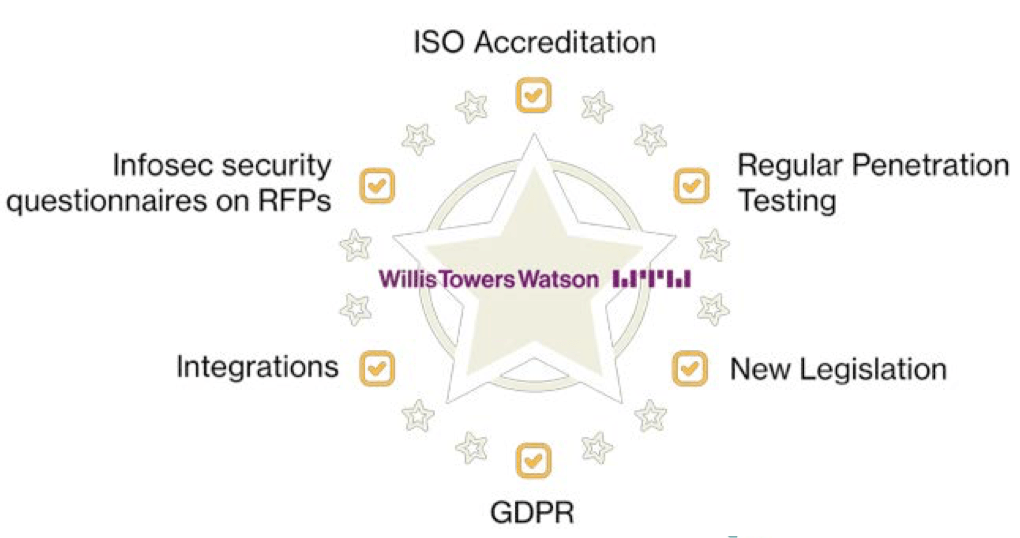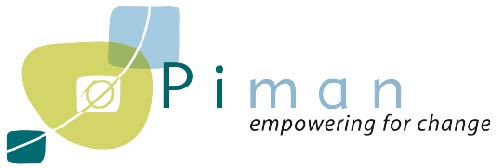Analysis of a Wave Expert report
In-depth analysis of personality traits
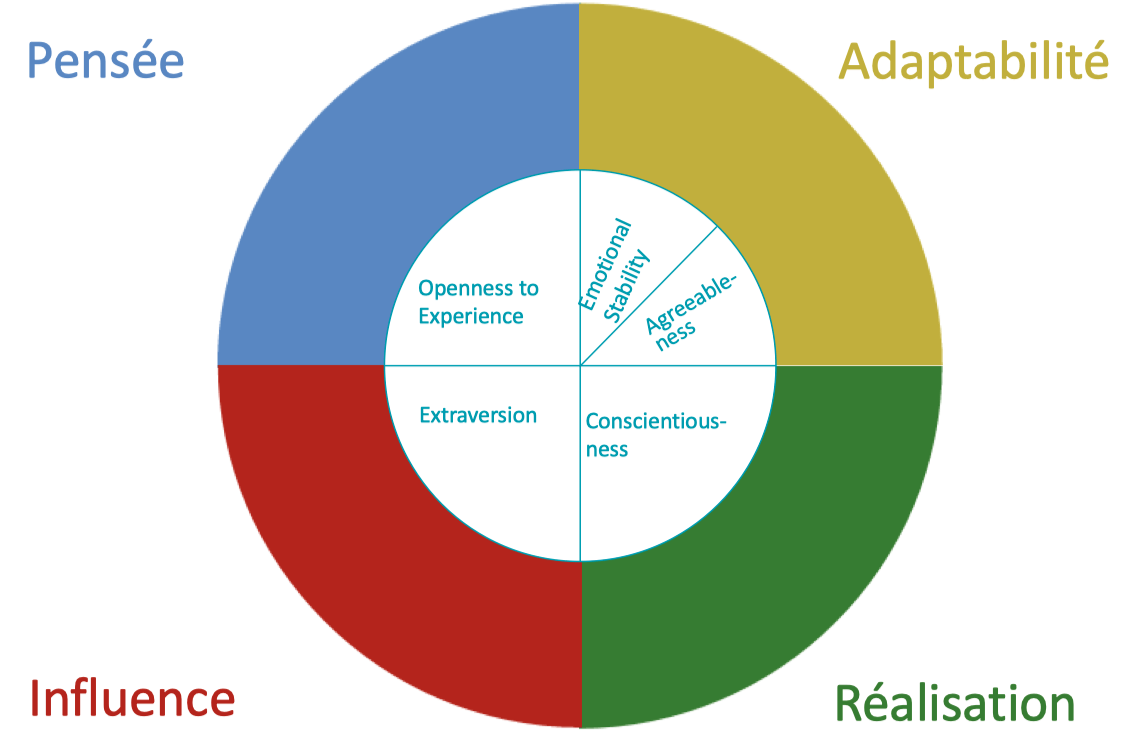
4 domains - 12 factors - 36 dimensions - 108 facets
Thought: rigorous; investigative; imaginative
Influence: sociable; impactful; assertive
Adaptability: resistant; flexible; other-oriented
Achievement: conscientious; structured; determined
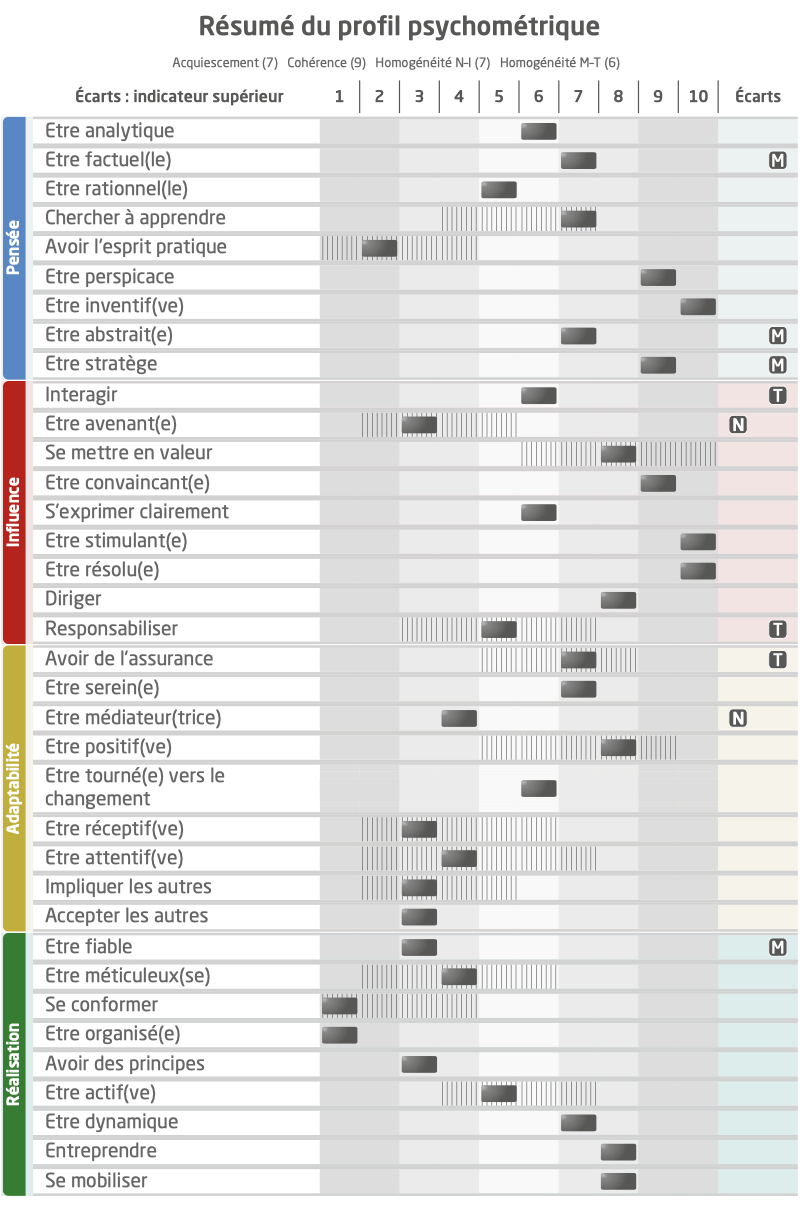
From personality traits to competence
The dimensions are related to personality factors:
- Allows us to understand motivations and talents, adopted behaviors and natural behaviors
- Useful for a detailed analysis of personality in order to predict future behaviors or to change postures, behaviors and attitudes
Skills are intended to predict career success:
- They constitute a more stable, more accomplished but less subtle version, which can be shared with more people and, above all, linked to a job or role profile.
4 domains - 12 factors - 36 dimensions - 108 facets
Problem Solvers: Evaluates problems; Seeks solutions; Innovates
Influences others: Develops relationships; Communicates ideas; Demonstrates leadership
Adapts approaches: Shows resilience; Adapts to change; Provides support
Produces results: Handles details; Structures tasks; Mobilizes to succeed

Wave Deep Dive
“Analyze in depth to reveal talents beyond what is humanly possible”
The extent of scores and facets

- When the gap between the scores on the facets of the same dimension is high (≥3), it is indicated by hatching around the sten cursor
- This usually indicates a peculiarity that goes against the general trend; shows the individuality of each person
The differentiation between Motivations and Talents

Homogeneity of motivations/talents:
- High M and T: Predicts sustained performance
- M > T: interest in development
- M < T : permet d’expliquer le manque de performance de personnes talentueuses ou l’insatisfaction dans un poste donné
The motivations:
- Measured by questionnaire items related to preferences, needs, desires, what makes a person move forward
- “I want”, “I like”, “I am motivated by”....
Talents:
- Measured by the questionnaire items related to effectiveness, what the individual perceives as effective
- “I am”, “I know well”, “I am efficient”...
Two modes of questioning: Normative and Ipsative

Normative/ipsative homogeneity:
- Degree of reliability of results thanks to a dynamic questioning format
- Gap between what the respondent would like to be and what he thinks he is
- Provides an understanding of what the participant will do when in the situation
- N > I: overestimation of the respondent; claims to be better
- N < I : sous-évaluation du répondant ; se sous-estime
Normative:
- Independent scale measurement
- Free choice; horizontal questions
- Easy-to-interpret factor analysis
- What the candidate claims to be
Ipsative :
- Forced choice; dynamic questioning
- Ranking of normative responses (more vs. less close)
- Artificial intelligence

Four ways to respond
Wave uses 4 types of checks to detect distortions in participant responses:
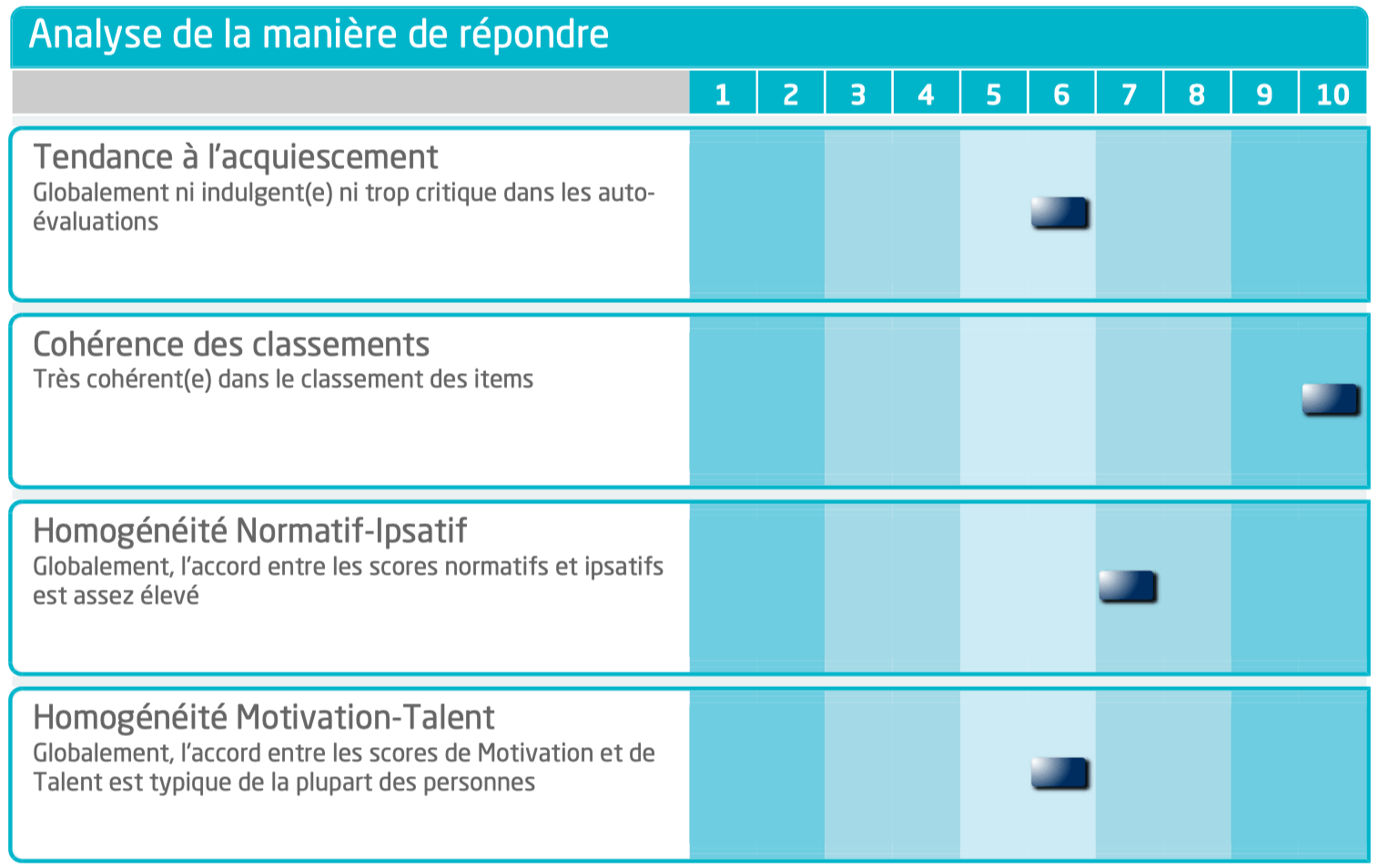
The tendency to acquiesce:
- Is the participant critical or lenient in their ratings?
- Does he have high/low self-esteem?
Consistency of rankings:
- Is the participant consistent in his or her ranking of items?
- Is he transparent about who he is?
Normative–Ipsative Homogeneity:
- What is the degree of alignment between a participant's normative and ipsative scores?
- Does he have a clear image of himself?
Motivation–Talent Homogeneity:
- How well aligned are a participant's motivations and talents?
- Does it have its own stable identity?
The Validity Wave
Does the tool measure what it is supposed to measure?
Probability of hiring a bad candidate. The more robust and robust the process, the higher the validity, and the lower the chances of hiring a bad candidate.
- Extensive research to identify personality traits that predict skills, and therefore performance
- A measure of skill potential that predicts performance by 57%, or 4 to 5 times less risk of error than with the leading tools on the market
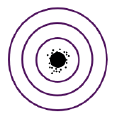
EPSOM Project: International comparative study on the predictive validity of the main personality questionnaires, demonstrated the validity and the difference of the Wave tools.
“A unique scientific study to measure tools against their performance predictive potential, revealing the Wave difference.” (2008, Epsom Project)
Scientific Validation
Was the topic sincere? Were the questions relevant, able to measure the theme without ambiguity, interpretation, or cultural bias?
- A fast, efficient recruitment process, with absolute reliability of results, and therefore a reduced turnover rate
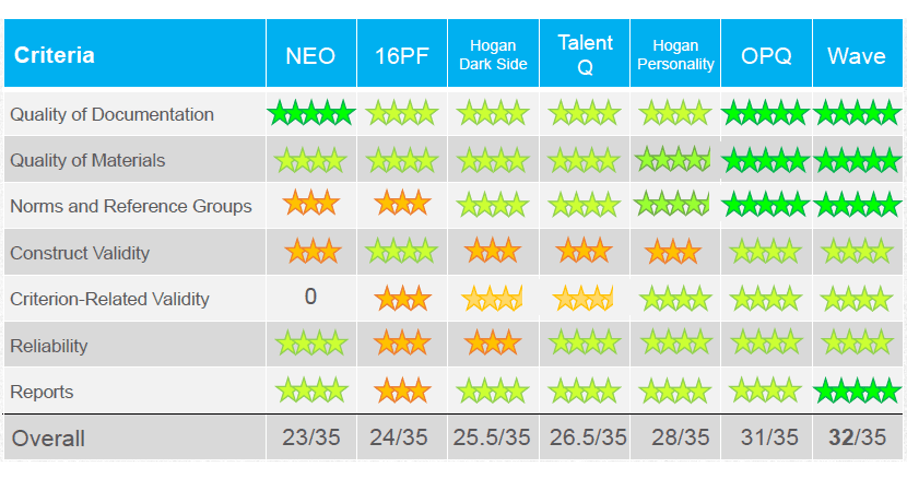
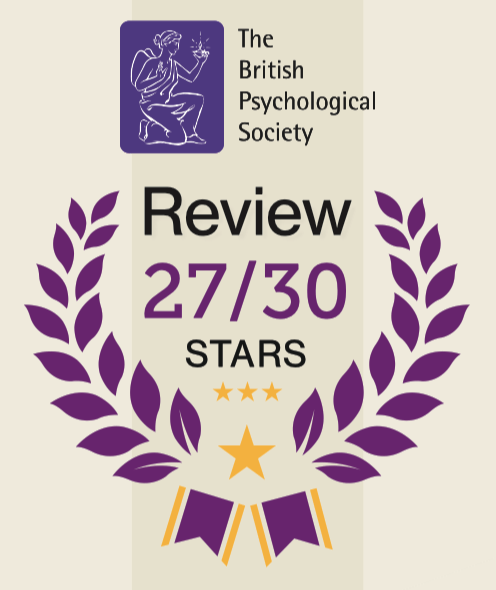
British Psychological Society (BPS): Scientific experts at the British Psychological Association officially recognize Wave as the most reliable and valid tool in the world.
Reliable and Safe Technology
All tools and reports are available through the Oasys platform, a cloud solution that meets the highest standards in terms of data confidentiality, reliability (system availability, security, etc.) and ease of use (no installations, no license fees, etc.).
- Secure data collection: encryption, double storage, separation of personal data and questionnaire data
- Access to data only with platform keys and software
Strategic axes of reliability and security of IT systems and data protection
